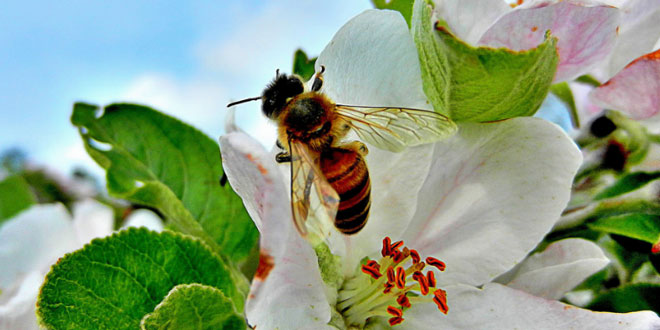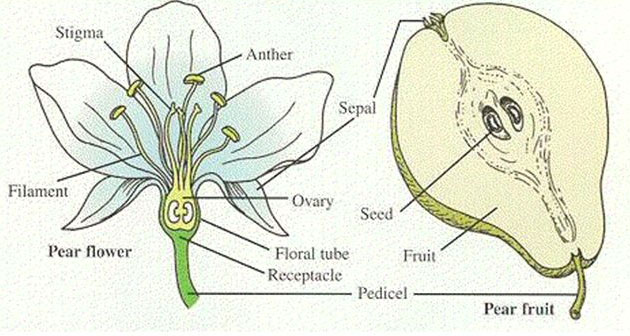What is pollination? explain different kinds of pollination.
Answer: Pollination: The transfer of pollen grains from anthers to stigma is called pollination. Pollination is of two types – self pollination and cross pollination.
- Self Pollination: When anthers of the same flower are transferred to the stigma; it is called self pollination.
- Cross Pollination: When anthers from a different flower are transferred to the stigma; it is called cross pollination. The flowers can be on the same plant or on different plants. Cross pollination is the norm in most of the plants. Plants need help from various agents of pollination to carry out cross pollination. Wind, insects, birds and other animals play the role of agent of pollination.
Question: Describe the different methods of asexual reproduction. Give examples.
Answer: The various modes of asexual reproduction in plants are as follows:
- Vegetative propagation: It is the ability of a plant to produce new plants from roots, stems, leaves, and buds. Vegetative propagation is divided into two types-
(a) Natural Vegetative propagation: This type of vegetation occurs easily in nature and involve simple vegetative parts. Potato plant sprouting from an eye is common example.
(b) Artificial Vegetative propagation: This type of vegetative propagation is performed manually and generally occurs in laboratory conditions. This formation of a complete plant from a stem cutting of rose is a common example of this method. - Budding: It involves the formation of a new individual from a bulb – like projection called a bud. The bud grows and get detached from the parent to form a new individual. It is commonly observed in yeast.
- Fragmentation: It is form of asexual reproduction where a new organism is formed from the fragments of the parent body. It is the only mode of asexual reproduction in Spirogyra.
- Spore Formation: Many non-flowering plants reproduce through spore formation. Spores are tiny cells protected by a thick wall. Fungi such as bread moulds reproduce asexually using this method.
Question: Difference between bisexual flowers and unisexual flowers.
Answer: Difference is as follows:
Question: Explain the formation of fruits and seeds.
Answer: The function of the flower is to help in fertilization. After fertilization, the flower becomes redundant. So, the sepals wither, the corolla withers, followed by the stamens, stigma and style. The ovary then develops into a fruit and the ovules develop into seeds.
Question: Improper working of the reproductive organs can lead to death. True or false? Give reason.
Answer: No, the improper working of the reproductive organs will not lead to death as if an organism is not able to reproduce it will not cause its mortality.
Question: What kind of flowers do you expect to be attractive – insect pollinated flowers or wind pollinated flowers? why?
Answer: Insect pollinated flower are more attractive because the insects attract to the colour and scent of the petals.
Question: Do you think insect – pollinated flowers can also be pollinated by wind.
Answer: Yes, it is possible that the insect pollinated flowers can be pollinated by wind because if the wind is strong it can carry the pollen grains. It also depends on the condition of the wind.
 Class Notes NCERT Solutions for CBSE Students
Class Notes NCERT Solutions for CBSE Students




How is sexual reproduction different from asexual reproduction?
In sexual reproduction two parent is present one male and one female .The offspring are not exact copies of either parent.
In asexual reproduction only one parent is present .The resulting offspring are exact copies of the parent.